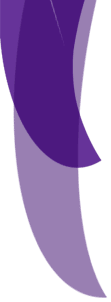|
| Shrek Kisses Fiona |

|
POODLES
Poodles were originally bred for hunting and water retrieving, in the large size. This variety
is called STANDARD - above 15". The next size of poodle would be the MINIATURE - above 10 - 15". The last size is the TOY
- up to 10".
There are three varieties according to size, they are the same breed. Registered dogs are not necessarily
show dogs.
The Parti-Poodle is two distinct colors at the skin. The Phantom-Poodle is lighter in color at
face, feet, and tail. This color has similarities to Siamese Cat markings. These two types are not desirable by A.K.C. standards.
The correct poodle body should be exactly square, breastbone to tail base equals withers to ground. The coat
texture should be dense and wiry. Puppy coat refers to the immature coat of any breed. Usually this coat is limp and fine,
the change may occur anytime from 8 to12 months. The Poodle coat gives the professional groomer a chance to be creative. This
is definitely an art form. Poodles may be clipped in a variety of patterns. These patterns range from casual to formal to
the absurd.
| Calista |

|
|
|
CLIPS
by. Connie Hershberger
Within the past 10 to 15 years, the methods for styiling poodles has evolved dramatically.
It is now perfectly acceptable, even encouraged, to trim poodles with style and flair. Contour
grooming, which was not well known, has gained popularity because it allows the groomer to interject his or her own style
and personality into the grooming process.
Before you begin grooming, decide which trim is the most appropriate for the poodle you have before
you. It has always helped me to imagine my scissors as a pencil, and myself an artist sketching a picture or sculptor molding
in a piece of clay. Balance and proportion are the keys to enhancing each basic pattern trim.
KENNEL: The body and legs are clipped evenly and the face, feet and tail
are specified. Use any length blade on the body and legs, and leave pompons of equal size on the head and tail. The hair on
the ears also may be shortened proportionately based upon request. This is a general cut that can be applied to any breed
cross or mix.
STRIP: The head, body, legs, face, feet and tail are clipped evenly all
over. Many times this is done to remove matting. This is a general cut that can be used on any breed, cross or mix pet.
LAMB: The body has a short pattern with the legs longer and fluffy. It
is blended where pattern and longer hair meet. This blending is scissored so you can not tell the difference where the shaved
pattern started and stopped. The legs are scissored, tapering slightly towards the foot. The face, feet and tail are specified.
Use a #1, #1 1/2, and a #4 or #5 or #7 blade on the body. Blending from the bladed area, scissor in the legs and the chest
area. The front legs should appear as columns and the rear legs should show angulation.
| Hamlet and Jasmine |

|
CLOWN : The body is clipped going partially down the legs. Bracelets are
placed on all four legs. The rear bracelet is placed first by clipping just above point of hock and ending at the ankle.
This is according to size of the dog. The front of the bracelet should be placed in front of the joint bend. the foreleg bracelet
is placed to line up with rear bracelet. All should be scissored to be the same size, with definition of shaved leg and bracelet.
PUPPY CLIP: The entire body and legs are hand scissored. The face, feet,
genital area and tail are specified using a #15 or # 10 blade. The topknot has no definition of the ears and neck. It is an
exaggerated or full neck. This may be modified for pet if it is colared at all times. The front legs should appear as columns
and the rear legs should show angulation. This is the required clip for any Poodle that is shown up to 1 year old. At 1 year
and up, the Continental or English Saddle is required.
| I know there is another one somewhere... |

|
DUTCH: Shaved pattern on body resembling a cross as viewed from above.
The stripes are placed on spine and waistband.Use a # 5/8, # 7/8 or # 8/8 blade on the band, depending on the size of your
dog.The band should start at or just behind the last rib. Balance and contour as you scissor the remainder of the coat.Be
sure the top line is level. The spine line is placed from withers to base of tail. The edges of the cross pattern are slightly
rounded to give appearance of diamond on back. The waistband and spine or back line are of equal width. The width of lines
will depend on the size of the dog. A good judge for this is the width of tail just above the base. Use a # 15 or # 10 blade
on the neck area. The neck band should end where the neck meets the shoulder.
ROYAL DUTCH: This is the same as the Dutch pattern with the exception of
the waistband. The waistband is twice the width of the spine line. There is a neckband. Face, feet and tail are specified.
| Pepper |

|
BANDED DUTCH : This pattern has a waistband and neckband.Use # 15 or #10
on the neck area. The neck band should end where the neck meets the shoulder. Use a # 5/8, # 7/8or # 8/8 blade on the band.
The band should start at or just behind the last rib. Balance and contour as you scissor the remainder of the coat. Face,
feet and tail are specified.Use # 15 blade
TOWN AND COUNTRY TRIM: use a # 15 or # 10 or #9 or # 8 1/2 or # 7 blade
on this pattern. Balance the front and rear sections. The neck band should end where the neck meets the shoulder. On the front
half, follow the back of the shoulder blade to just behind the front leg. On the rear half, follow around the hip to just
in front of the flank. Scissor the rest of the body, balancing and contouring. The front legs should appear as columns and
the rear legs should show angulation. Be sure the top line is level. Use a # 15 on the face, feet, tail and genital areas.
NECKBAND PLACEMENT: Neckband placement is from topknot to a point just
in front of shoulder, all the way around the neck. On the front of the neck, it is angled like a necklace.
| Shrek and Fiona |

|
FACES
There are four basic Poodle faces. Clean face, Donut Mustache and Beard, Sweetheart Mustache
and Beard, and French Mustache.
All of the faces are set the same on the cheek and neck areas. The muzzle is where the patterns
vary. #10 against the grain, unless very sensitive.
BASIC CHEEK PATTERN: Shave a line from the earhole to the corner of eye.
The entire cheek area is shaved.
SENSITIVE FACE: The alternative to shaving is scissoring each of the patterns
in.
POODLE FEET: #10 for junior and #15 for seniors, against the grain. Hair
is completely shaved from the foot. The wrist bones are used as a guide. You must feel for them on the sides to place correctly.
I hope this information is useful to you. I took a grooming class and the instructor gave me all this information.
It has helped me a great deal in grooming my poodles.
|




